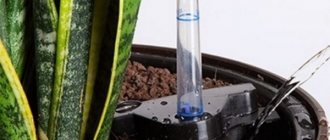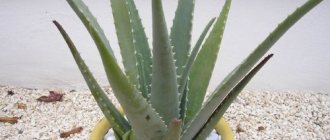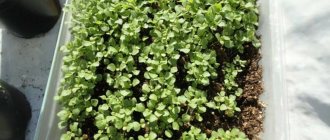Author: Elena N. https://floristics.info/ru/index.php?option=com_contact&view=contact&id=19 Category: Garden plants Published: February 24, 2019Last edits: January 20, 2021
- When to plant
- Growing conditions
- Duplex
plant (lat. Lathyrus odoratus) belongs to the Chin genus of the Legume family. The scientific name of the plant consists of two words, the first of which is translated as “very attractive”, and the second as “fragrant”. Some botanists claim that this flowering herbaceous plant is native to the Eastern Mediterranean - its range extends from Sicily east to the island of Crete. Other scientists believe that sweet peas were brought to Sicily by conquistadors from Ecuador and Peru. The plant has been cultivated since the 18th century: in 1699, while walking under the walls of the monastery, the Sicilian monk Francisco Cupani discovered a flower with an unusually pleasant smell, collected seeds from it and sent them to England to his friend, a school teacher. And in England, thanks to the work of breeders, sweet peas over time became the king of ampels. The first five varieties of the plant appeared in 1800. Today there are more than 1,000 varieties of sweet peas. Gardeners are attracted by the bright flowers and pleasant smell, which is where the plant got its name. Sweet peas are most often used for vertical gardening of gazebos, balconies and terraces. Perennial sweet peas in the middle zone are usually grown as an annual crop
Planting and caring for sweet peas
- Flowering: from July until frost.
- Planting: sowing seeds for seedlings - in mid-March, planting seedlings in the ground - at the end of May.
- Lighting: bright light.
- Soil: moist, well-drained, fertilized, with a pH of 7.0-7.5.
- Watering: regular, on average once a week, using 30-35 liters of water per m².
- Feeding: not necessary, but will not interfere: at the beginning of growth - with a solution of 1 tablespoon of Nitrophoska and 1 tablespoon of urea in 10 liters of water, at the beginning of flowering - with a solution of 1 tablespoon of Agricola and 1 tablespoon of potassium sulfate in 10 liters of water, at the height of flowering - a solution of 1 tablespoon of Agricola for flowering plants and 1 tablespoon of Rossa in 10 liters of water.
- Garter: tall varieties of peas need to be tied to a support.
- Hilling: carried out regularly to a height of 5-7 cm with fertile soil added to the base of the stem - this stimulates the development of adventitious roots in the plant.
- Reproduction: seed.
- Pests: root weevil and various types of aphids.
- Diseases: ascochyta blight, powdery mildew, downy mildew, fusarium blight, root rot, blackleg, viral mosaic and deforming viral mosaic of peas.
Read more about growing sweet peas below.
Diseases and pests
Sweet peas are affected by pests and fungal diseases. The most common of them are:
- powdery mildew;
- gray mold;
- root rot;
- blackleg;
- ascochyta;
- mosaic viruses.
When the first signs of disease are detected, the plant is immediately treated with biofungicides, and Farmayod or biosoda helps well against powdery mildew. For prevention purposes, it is necessary to carry out pre-treatments with drugs, and select only healthy seed material.
Aphids and root weevils cause great harm to the plant. These pests infect the leaves of the plant, which inhibits the growth and development of the annual plant and spoils its decorative properties. You can get rid of pests by spraying peas with a tobacco-garlic mixture. During the rainy season, slugs are also greedy for peas, as well as for all plants of the legume family.
Botanical description
The sweet pea flower, or sweet pea, was described by Carl Linnaeus in 1753. The root system of the plant is highly branched, taprooted, penetrating into the soil to a depth of one and a half meters. Like most legumes, sweet peas enter into symbiosis with nodule bacteria that absorb nitrogen from the air. The stems of the tree are climbing, weakly branched, they climb up the support, clinging to it with modified leaves - branched tendrils. Sweet pea flowers resemble moths, but the British think they are like a boat under a sail: the corolla consists of a large petal, similar to a wide oval sail, two side petals (“oars”) and two fused lower petals, forming a “boat.” Sweet peas bloom profusely. It begins in July and with proper care continues until frost. The fruits of sweet peas are small bivalve beans with 5-8 spherical, laterally compressed seeds of yellow, greenish or black-brown color, which remain viable for 6 to 8 years.
Useful tips
Sweet pea is not a capricious plant, this is not difficult to understand. It is necessary to create optimal conditions, taking into account some features.
- Planting peas using seeds is much easier than planting seedlings. Seedlings are capricious; they need time to “get over it.” The plant has a good root system that goes very deep into the soil.
- Replanting it without damaging the root system is almost impossible. The plant grows quickly, and it is possible that its stems may be damaged or broken during replanting. If you decide to plant sweet peas as seedlings in open soil, then you need to replant them together with an earthen pot.
- Peas have a dense seed coat, which causes uneven germination. Professionals, trying to speed up the process, came up with little tricks: the seeds are pre-soaked, rubbed with sandpaper, and cut.
- Fast growth. To weave it in a timely manner, you need to install the mesh or supports in time. It is recommended to tie the plant during growth.
- The root system of sweet peas is well developed and goes deep into the soil. Therefore, watering should be abundant and regular.
Growing sweet peas from seeds
How to sow seeds
Cultivation of sweet peas begins with sowing seedlings in mid-March. Before sowing, slow-germinating sweet pea seeds should be soaked in water for 10-12 hours or kept in a fifty-degree solution of the drug Bud (1-2 g per 1 liter of water). Then, for 2-4 days, they are germinated in gauze, wet sand or sawdust at a temperature of 20-24 ºC. As soon as the sweet pea seeds sprout, they should be sown immediately.
Store-bought soils Saintpaulia, Rose or a mixture of humus, peat and turf soil in a ratio of 2:2:2:1 are best suited as a substrate. Any of these substrates must be disinfected with a strong solution of potassium permanganate, and it is better to use cups or pots as containers for growing seedlings. Sowing is carried out in a moist substrate to a depth of no more than 2-3 cm, placing 2-3 seeds in each cup. If you sow peas in a common box, then the distance between the seeds should be about 8 cm. After sowing, the substrate is watered, the containers are covered with film and kept on a sunny windowsill at a temperature of 18-22 ºC.
- Flower care in September
Seedling care
When massive seed germination begins, and this can happen in a week or two, you need to remove the film from the crops and lower the temperature to 15-16 ºC - this measure promotes the formation of nitrogen-fixing nodules on the roots of the seedlings. Keep the substrate slightly moist at all times and provide the seedlings with good lighting: if you do not have the opportunity to keep the seedlings in a south-facing window, provide them with artificial lighting for 2-3 hours daily. To do this, you can use a phytolamp or a fluorescent lamp, fixing them at a height of 25 cm above the seedlings and turning them on, for example, from 7 to 10 or from 17 to 20.
In the development phase of 2-3 true leaves, seedlings are pinched to stimulate the development of side shoots. After pinching, the seedlings are fed with a solution of 2 g of Kemira in 1 liter of water.
Soil and site preparation
There are no special requirements for the soil; the soil must be fertile, not heavy , with neutral acidity. It is not recommended to fertilize the soil with fresh manure, as it can provoke Fusarium wilt and cause plant disease. If you have clay soil, then you need to make additional drainage to prevent excessive soil moisture.
Peas are a light-loving plant, so choose an open, sunny but windless area of the garden. The plant will also grow in the shade, but it will not bloom for long and not very abundantly.
Planting sweet peas in the ground
When to plant
Sweet peas from seeds are planted in open ground towards the end of May, when the soil has warmed up and the threat of return frosts has passed. If by that time the seedlings have already formed buds or flowers, tear them off so that all the energy of the plants can be directed to the formation of the root system. 10 days before planting seedlings, it is necessary to carry out hardening procedures with it. To do this, containers with seedlings are taken out into the open air every day, gradually increasing the duration of stay until the sweet pea seedlings can stay outside for a whole day.
How to plant
Sweet peas love light, warm areas and moist, well-drained soil enriched with fertilizers with an acidity pH of 7.0-7.5. Before planting seedlings, dig up the area to the depth of a spade with compost or humus, phosphorus and potassium fertilizers. Do not use fresh manure as fertilizer, as it provokes fusarium wilt, and do not apply nitrogen fertilizers: sweet peas do not need them.
Make holes in the row at a distance of 20-25 cm from each other and plant 2-3 plants in each. For tall varieties of sweet peas, you need to immediately install supports. Keep in mind that annual sweet peas must be disposed of in the fall, and the plant can only be replanted in this area after 4-5 years.
Planting before winter
An amazing phenomenon is that sweet pea seeds can be planted before winter. The seeds are resistant to low temperatures, get along well in cold soil and begin to germinate with the onset of spring.
Such flowers have a great advantage. Firstly, these sprouts harden over the winter and become resistant to temperature changes. Secondly, they bloom more luxuriantly and brightly in the summer. And the emanating aroma intensifies.
The planting system in winter is simple:
- A couple of weeks before frost, the ground is dug up and cleaned.
- When cold weather sets in, shallow furrows are made in the garden bed.
- Seeds are planted there at a distance of 5 cm and covered with earth.
- Then the bed is rolled up and left there for the winter.
And in the spring you will be able to observe the shoots and anticipate how the gardens will soon bloom beautifully and luxuriantly.
Sweet pea shoots in spring when sown before winter
Caring for sweet peas
Growing conditions
Planting and caring for sweet peas is not labor intensive. How to grow sweet peas? It needs watering, weeding, loosening the soil, supports, fertilizing and protection from diseases and pests. Watering must be regular and sufficient, since due to lack of moisture, buds and flowers may fall from the plant, and the duration of flowering may be greatly reduced. If the summer is rainless, sweet peas need to be watered weekly, using 30-35 liters of water per m² of planting. You can prolong flowering by promptly removing faded flowers.
Tall varieties of sweet peas need to be tied to supports, which are used as twine or mesh. As the peas grow, their stems are directed in the desired direction and tied up.
In order to stimulate the development of adventitious roots, it is necessary to hill the plants to a height of 5-7 cm and add fertile substrate to the base of the stem.
As for fertilizing, they are not required, but desirable. At the beginning of growth, sweet peas are fertilized with a solution of 1 tablespoon of Nitrophoska and 1 tablespoon of urea in 10 liters of water. At the beginning of flowering, a solution of a tablespoon of Agricola and the same amount of potassium sulfate in 10 liters of water is used for feeding, and at the height of flowering, sweet peas are fertilized with Agricola for flowering plants and Rossa, dissolving one tablespoon of fertilizer in a bucket of water.
Sweet peas do not need pruning.
Pests and diseases
Among the pests that pose a danger to sweet peas are the nodule weevil and various types of aphids. At the beginning of the growing season, the weevil gnaws out semicircles along the edges of the leaves, and its larvae eat the roots of the plant. As a preventive measure against the pest, when planting seedlings, pour 100 ml of a 0.1% Chlorophos solution into each hole. The plants themselves need to be sprayed with the same solution.
Of all the types of aphids that can attack sweet peas, bean aphids, chin aphids and pea aphids. These tiny pests suck the juices out of plants, deforming their organs, and infect them with viral diseases. In order to destroy aphids, as well as for prevention, sweet peas are treated 2-3 times during the growing season with Zineb or Ciram with a break between sessions of 2-3 weeks.
Among the diseases, sweet peas can be affected by ascochyta blight, powdery mildew, downy mildew, fusarium blight, root rot, black leg, viral mosaic and deforming viral mosaic of peas.
- What to sow for seedlings in January - how to calculate the timing so as not to weaken the seedlings?
With ascochyta blight, brown spots with clear boundaries appear on the leaves, beans and stems of peas. You can fight the infection with two or three treatments with a solution of Rogor at an interval of 2-3 weeks.
Powdery mildew and downy mildew (downy mildew) appear in the second half of summer as a loose whitish coating on the leaves and stems of plants. Over time, the leaves turn yellow, turn brown and fall off. Destroy pathogens with a five percent solution of colloidal sulfur by washing the leaves with it.
Signs of fusarium are yellowing and wilting pea leaves. Diseased plants cannot be treated; they must be removed, while healthy ones must be treated with a solution of the drug TMDT. As a preventive measure, crop rotation should be observed on the site.
Black leg and root rot cause the root collar and roots of sweet peas to darken, and the plant dies. Infected specimens cannot be saved; they must be removed, and healthy ones must be transplanted to another place, having first disinfected the soil and roots of the plants.
The viral mosaic appears as a line pattern on the leaves, and the tops of diseased shoots become twisted and deformed. Plants infected with any of the viral diseases must be removed and burned, since they cannot be cured.
Application of rank in landscape design
Iberis perennial flower - cultivation and care
Due to its ability to climb and bloom for quite a long time, chin is most often used for vertical gardening. The most suitable places for its landing are:
- walls that need to be given a more picturesque look;
- fences and hedges that colored peas will turn into living ones;
- the perimeter of the gazebos, which it is advisable to shade;
- supports (grids, gratings), which makes it possible to get a blooming green wall.
Low-growing varieties fit perfectly into the landscape when planted along borders, in flower beds, and they are very good in single plantings for cutting.
Mass plantings of peas of different colors look especially bright
Types and varieties
There are more than 1000 varieties of sweet peas. They are all divided into 10 garden groups, of which the following are most often grown:
Duplex
Plants with strong stems and flowers with a double sail, collected in inflorescences of 4-5 pieces. One of the best varieties of the group:
- Cream - a plant up to 90 cm high with fragrant flowers up to 4.5 cm in diameter, light cream in color with a folded or double sail. The inflorescences, located on straight peduncles up to 20 cm high, consist of 3-4 flowers;
Galaxy
Created in 1959, a group of late-flowering varieties more than 2 m high with strong inflorescences 30 to 50 cm long with 5-8 corrugated, often double flowers up to 5 cm in diameter. These plants are recommended for landscaping and for cutting. The best varieties:
- Neptune is a branched variety up to one and a half meters high with strong straight peduncles up to 30 cm high, on which blue flowers up to 5 cm in diameter are collected in inflorescences of 5-7 pieces with a white base and often with a double sail;
- Milky Way is a branched sweet pea up to 145 cm high with very fragrant soft cream flowers up to 5 cm in diameter with a double sail, of which there can be 5-6 pieces in one inflorescence;
Bijou
Created by the Americans in 1963, a group of semi-dwarf late varieties up to 45 cm high with strong inflorescences up to 30 cm long, consisting of 4-5 corrugated flowers with a diameter of up to 4 cm. These plants can be grown without supports, they are recommended for borders and ridges;
Spencer Group
which includes powerful multi-stemmed plants up to 2 m high with racemose inflorescences consisting of 3-4 simple or double corrugated flowers up to 5 cm in diameter with wavy petals. The group is represented by varieties with a medium flowering period and is recommended for landscaping and cutting. The best varieties of the group:
- Warrier is a plant with dark purple flowers with white strokes at the base of the boat, located on straight peduncles. The diameter of the flowers is about 4 cm, the sail is wavy, and the oars are bent;
- Jumbo is a variety up to 100 cm high with salmon-pink flowers, a white boat, a slightly wavy sail and slightly bent oars. The aroma of flowers with a diameter of about 4 cm is weak, the peduncles are straight and strong;
- Charlotte - the stems of this variety are up to 150 cm high, the flowers are bright crimson, up to 4.5 cm in diameter, the sail is wavy, the paddles are widely spaced. Inflorescences of 2-4 fragrant flowers are located on strong peduncles up to 25 cm high;
- Cream Gigantic is a plant up to 175 cm high with large creamy, fragrant flowers up to 4.5 cm in diameter, a wavy sail and widely spaced, slightly bent paddles. Inflorescences, consisting of 3-4 flowers, are located on peduncles up to 30 cm high.
In addition to those described, varieties of the group Spencer Monty, Mahogany, Flagship, King Lavender, Ayer Worden, Garnet and others are popular;
Earley Spencer
Created by the Americans in 1910, a group of early varieties 120-150 cm high with inflorescences up to 35 cm long, consisting of 3-4 corrugated flowers with a diameter of up to 4.5 cm. The varieties are recommended for landscaping and for cutting;
Cupido
Created back in 1895, a group of low-growing varieties up to 30 cm high with inflorescences up to 7 cm long, consisting of 2-3 medium-sized flowers of various colors. These varieties are recommended for landscaping;
Cuthbertson-Floribunda
A group of varieties created in 1952 in America. These are tall plants up to 2 m high with strong inflorescences up to 40 cm long, consisting of 5-6 large corrugated flowers with a diameter of up to 5 cm. These early ripening varieties are recommended for cutting. The best of them include:
- Dieffenbachia - care, photos, types
- David is a variety up to 140 cm high with large fragrant dark crimson flowers with a white stroke at the base of the boat and a wavy sail. Inflorescences consisting of 5-6 flowers up to 5 cm in diameter are crowned with hard peduncles up to 30 cm long;
- Kennet is a variety up to 1 m high with large dark red flowers, collected in inflorescences of 5-6 pieces. The diameter of the flowers is about 4 cm, their sail is slightly corrugated, the oars are slightly bent, the peduncles are up to 16 cm long;
- White pearl is a white sweet pea with flowers about 4.5 cm in diameter, collected in inflorescences of 5-6 pieces and located on peduncles up to 30 cm long.
In addition to those described, such varieties of the group as Zhelanny, Peggy, Robert Blain, William and others are also widely known;
Royal Family
This group of heat-resistant varieties was created in 1964. They are an improved version of the Cuthbertson-Floribunda group varieties. Inflorescences up to 30 cm long consist of large double flowers of various colors depending on the variety. The disadvantage of these plants is their increased sensitivity to daylight hours, so they are not grown in winter. Varieties of this group are recommended for landscaping and for cutting;
Multiflora Gigantea
This group of early varieties up to 2.5 m high was created in 1960 by American breeders. The plants have strong inflorescences from 35 to 50 cm long, consisting of 5-12 corrugated flowers with a diameter of about 5 cm. The varieties are recommended for landscaping and for cutting;
Rufled
A group of powerful plants with 6-10 large flowers in one inflorescence. The peduncles are long and strong, the sail is wavy. The best varieties of the group:
- Grace is a branched plant up to 155 cm high with inflorescences consisting of 5-7 fragrant pale lilac flowers about 5 cm in diameter with dark veins and a wavy sail. The height of rigid peduncles is up to 35 cm;
- Ramona is a variety up to 130 cm high with bright carmine flowers with a white tongue at the base of the boat and a wavy sail. In one inflorescence, located on a rigid peduncle up to 30 cm long, there are 5-6 flowers with a diameter of up to 5 cm;
Intergen
A group of early low-growing varieties bred in 1991 by Russian breeders, filling the niche between the varieties of the Cupido and Bijou groups. The height of plants in this group is from 35 to 65 cm, so they can be grown without supports. Inflorescences up to 20 cm long consist of 3-4 simple flowers with a diameter of up to 3 cm. The best variety:
- Geniana is a plant with a height of 30 to 50 cm with very fragrant white and lilac flowers;
Lel
A group of varieties, bred in the same year, intermediate between Bijou and Multiflora Gigantea, with a height of 65 to 100 cm with strong inflorescences up to 30 cm long, each of which consists of 7-12 corrugated flowers with a diameter of up to 4.5 cm. Popular varieties of the group:
- Lucien is a very fragrant plant 40-60 cm high with light pink flowers;
- Lisette is a very sweet pea, 40 to 60 cm tall with bright red flowers.
In the 70s of the 20th century, groups of English varieties Jet Set and German Laisers Koeningspiel were created. Currently, breeding work on sweet peas continues.
Reproduction
Sweet peas are propagated by seeds. Seeds must be collected selectively, after the pods have turned yellow, without allowing them to burst. Delay can lead to big losses.
Sow this beautiful flower near your family vacation spot and admire its unusual blooms and fragrant aroma.
By following all the above rules, you can achieve flowering of sweet peas before the first frost, and you will be rewarded with full-fledged seeds even in bad summer.
Join our Facebook group











